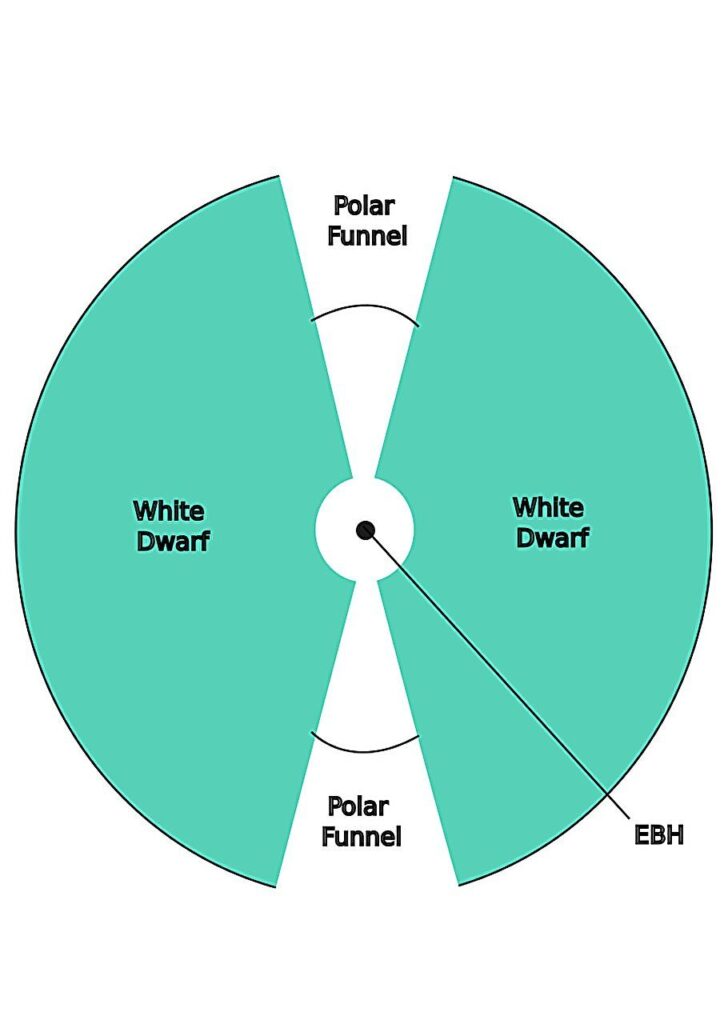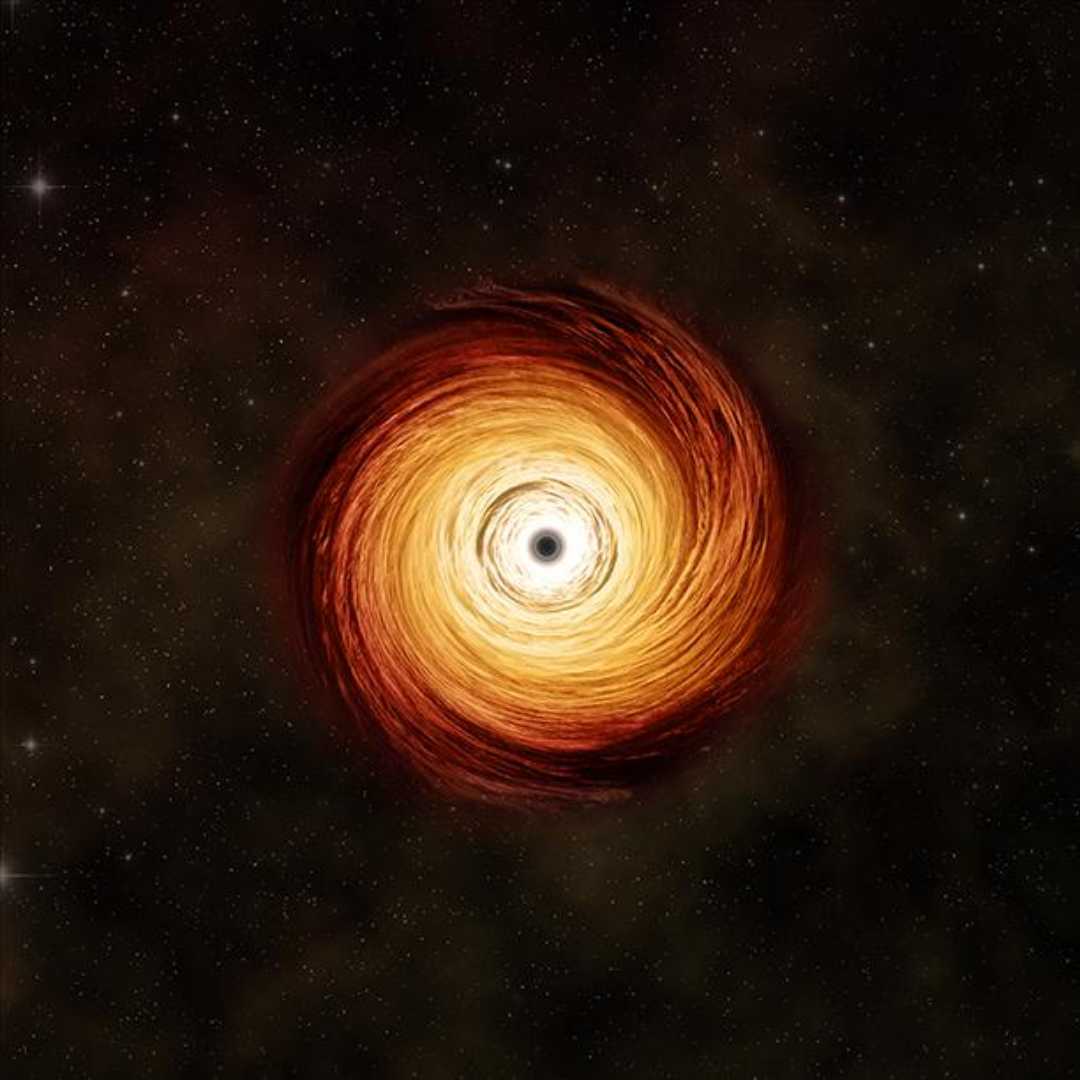When people think of black holes, they imagine something dramatic: a star exploding in space, collapsing in on itself, and forming a cosmic monster that eats everything around it. But what if black holes didn’t always begin with a bang? What if, instead, they started quietly—growing inside stars, which still appear alive from the outside, without anyone noticing?
Our recent astrophysical research, published in Physical Review D, suggests this could be happening—and the story is far stranger and more fascinating than we imagined.
The mystery of tiny black holes
Recent gravitational wave detections have hinted at the existence of near- and sub-solar-mass black holes—far lighter than those typically formed in stellar explosions. That’s puzzling. According to standard models, stars that small shouldn’t be able to collapse into black holes at all. So where are these low-mass black holes coming from?
One intriguing theory suggests that these objects may originate from dark matter, which we still barely understand. This invisible substance permeates the cosmos, shaping galaxies with its gravity but eluding direct detection. Some researchers believe dark matter could slowly accumulate inside stars. Over long timescales, this buildup might trigger a quiet collapse—forming a tiny black hole at the heart of an otherwise normal-looking star.
What happens next depends on the star. Once a black hole forms inside a star, it starts to grow, feeding on the surrounding matter. But how this growth proceeds—and what the end state is—depends crucially on the kind of star and, intriguingly, its spin.
White dwarfs: Three fates hidden in the core
White dwarfs are the dense, compact remnants of sun-like stars. Roughly Earth-sized but usually less than or slightly greater than the sun’s mass, they resist further collapse through a delicate balance of quantum pressure. But if a black hole forms in their center, a hidden war begins.
Here’s where things get fascinating. The spin of the white dwarf—how fast it’s rotating—plays a decisive role. Three possible outcomes have been proposed depending on its spin:
Black hole formation: If the star spins slowly, matter around the core falls easily. The tiny black hole steadily grows, eventually consuming the whole star, and transmutes it to a low-mass black hole.
Naked singularity formation: At certain intermediate spins, the collapse can overshoot the formation of an event horizon. The result? A naked singularity—a bare black hole that is not hidden behind a horizon. These objects challenge our understanding of physics and may expose the inner workings of gravity itself. This, in fact, is a new channel to form a near- and sub-solar-mass naked singularity itself.
Stalled accretion—the hybrid star: If the white dwarf is rapidly spinning, the black hole’s growth slows dramatically. Resistance from the star’s rotation and viscosity stalls the accretion flow, leading to the formation of polar funnels, preventing full collapse. The black hole becomes a kind of parasite: quietly embedded within the white dwarf, feeding ever so slowly. This allows the white dwarf to survive with a small “endoparasitic” black hole (EBH) at its center. From the outside, the star may seem normal—but deep inside, a silent transformation is underway.

Neutron stars: The one-way path to a black hole
Neutron stars are even denser than white dwarfs—so dense that a teaspoon of their matter would weigh a billion tons. The mass of a neutron star is usually greater than the sun’s mass with a radius of around ten kilometers. If a tiny black hole forms even within a rapidly spinning neutron star, there’s no ambiguity.
The black hole grows rapidly, hollowing the neutron star from within. One day it’s a neutron star; the next, a black hole—transmuted from the inside out, leaving only silence behind.
Hidden in plain sight
These hidden black holes may lurk inside stars, slowly growing, invisible until they leave subtle clues: strange gravitational signatures, unusual cooling behaviors, or disruptions in a binary orbit.
Some of these black holes might remain entombed in their hosts for billions of years. Others might eventually consume their stars entirely and emerge as standalone black holes (or naked singularities)—long after their quiet birth.
The galactic bulge—a football-shaped structure at the center of our galaxy—is believed to be rich in dark matter particles. The discovery of sub-solar-mass black holes and naked singularities in this region could suggest that they originated from the collapse or transmutation of white dwarfs. For the same reason, the predicted hybrid star—a white dwarf surviving with a small parasite black hole at its center—might also be found in this region.
Listening to the silence
This idea not only reframes stellar death—it opens up new ways to study dark matter. If these stealthy black holes really exist, they could act as natural detectors for dark matter’s behavior inside stars. And if naked singularities are born this way, we might be witnessing violations of cosmic censorship—a foundational principle in general relativity.
So next time you look at the night sky, remember: Not every star is what it seems. Some may be living out a secret story—peacefully glowing, while a black hole or something even stranger grows silently within.
Reference: H. A. Adarsha et al, Accretion inside astrophysical objects: Effects of rotation and viscosity, Physical Review D (2025). DOI: 10.1103/PhysRevD.111.103033
